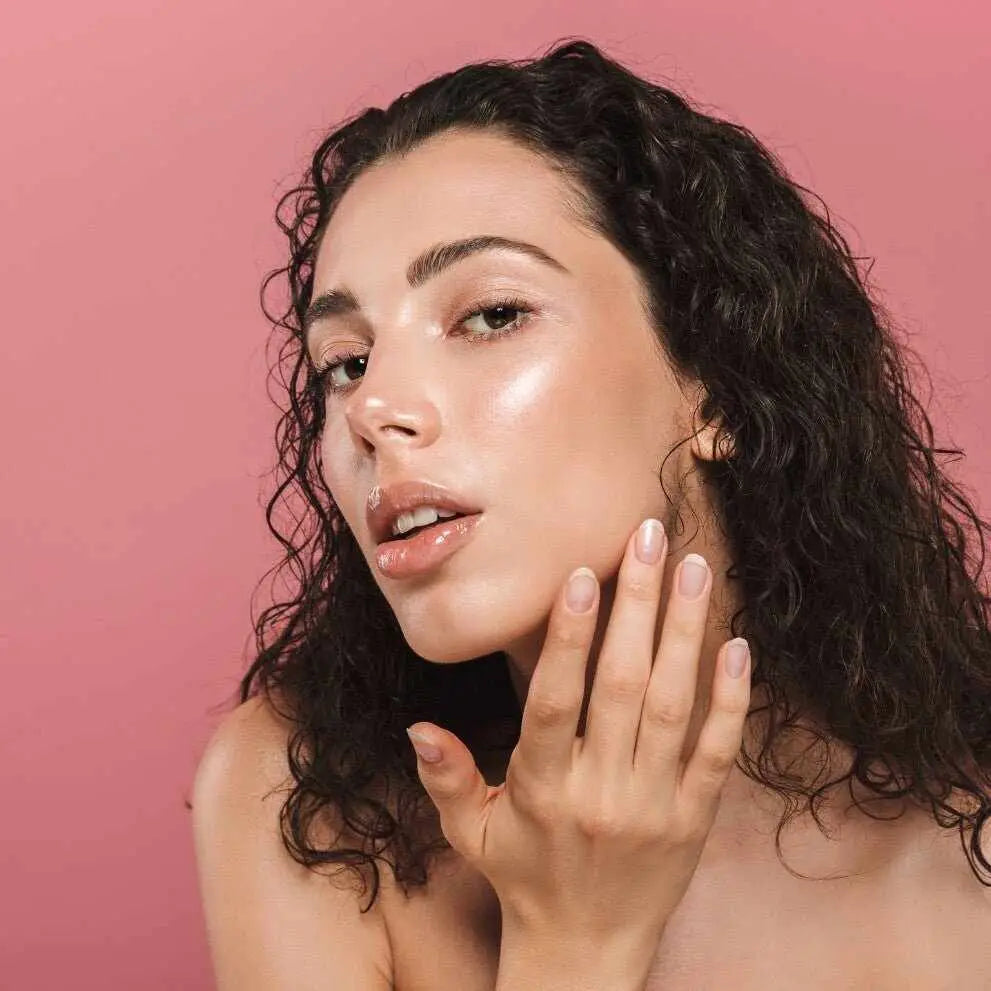Not all skin blemishes are the same. Different blemishes can appear on our skin, and the most common are blackheads, whiteheads, sebaceous filaments, and enlarged pores.
In this article, I'll explain how to distinguish them and how to treat them to minimize blemishes and have healthier skin.
In this article I'll explain what they are:
The white dots
Whiteheads , also known as closed comedones , are a type of non-inflammatory acne that tends to form on the face, neck, back, and arms. Except for some cases, where they may also be painful or itchy, whiteheads are simply unsightly.
One might think of them as the precursors to acne. In fact, it happens that a whitehead, passing from the intermediate stage of blackhead, tends to pour its secretions inside and thus cause acne, an inflammation characterized by pus-filled pustules or papules.
Causes, symptoms and remedies for whiteheads
Whiteheads, like blackheads, are directly linked to the production of sebum by the sebaceous glands and to hormonal production , most frequently affecting young people during puberty and women with polycystic ovary syndrome.
There are many other causes associated with whiteheads, among which the most common are:
• Poor cleansing of the skin
• Aggressive detergents or cosmetics
• Stress
• Inheritance
• Hormonal changes (e.g. menstruation or pregnancy)
• Prolonged exposure to UV rays
• Incorrect nutrition
Whiteheads can become infected or scarred. Even if left untreated, they often disappear spontaneously with simple daily routines, such as:
- change conventional cosmetics by avoiding silicone-based and comedogenic ones
- choose only natural and eco-friendly cosmetic products for your skin
- clean your face better
- check the power supply
Be careful not to confuse the white dots with millet grains!
Milia are microcysts caused by accumulations of sebum and keratin and should only be removed by a professional!

A white dot on the left, grains of millet on the right
Blackheads
Blackheads, also known as open comedones, are very common skin blemishes among young people. They typically appear on areas with high sebaceous gland density, such as the back or face.
Over time, a blackhead may regress or degenerate into bacterial inflammation. This is why they are also considered the precursors of acne, especially juvenile acne.
Causes, symptoms and remedies for blackheads
Blackheads form following the opening of whiteheads: lipid oxidation and the migration of melanin-rich cells determine the typical formation of the dark cap, hence the name "blackhead".
There are many factors that can influence their appearance, and they often interact with each other. Improper skin cleansing can facilitate the appearance of blackheads, for example.
They're also typical of puberty, and this is due to the increase in sex hormones (the main one being testosterone). Even some particularly greasy cosmetics can promote their presence.
Removing blackheads by squeezing them between your fingers is the most common and riskiest remedy. It can lead to infection and scarring!
It is possible to remove them without incurring these risks with other systems:
• Natural cosmetic products with exfoliating action , capable of controlling and reducing excess sebum.
• Dermo-aesthetic treatments
• Deep cleansing of the skin with skin gritting
• Medications, recommended when blackheads are persistent or prone to inflammation. However, starting a drug treatment without a dermatological examination is unthinkable.
The sebaceous filaments
It's easy to confuse sebaceous filaments with whiteheads or blackheads.
Sebaceous filaments are normal functions of the skin, designed to channel the flow of sebum along the pores. Sometimes they protrude, revealing part of the filamentous structure. They tend to appear clustered on the nose, cheeks, or chin and can be gray, flesh-colored, or whitish.

Blackheads on the left, sebaceous filaments on the right
Sebum, sebaceous filaments and treatments
Sebum is composed of squalene, glycerides, waxes, cholesterol, and fatty acids. Its main function is to protect and hydrate the skin, forming part of the hydrolipidic film.
It's important to understand, however, that there's no way to permanently eliminate sebaceous filaments. You can only try to contain them.
To limit its release, you need to work on the amount of sebum present in the pores by cleaning them with charcoal , kaolin , or enzyme-based masks. Enzyme peels are also excellent for controlling sebum production and, consequently, the appearance of sebaceous filaments.
🌿 Tip from Daiana
To manage blackheads and enlarged pores, I always recommend including exfoliation as a regular part of your routine, but don't overdo it. Alternating gentle exfoliants with purifying masks helps keep skin cleaner and more even, avoiding irritation. Remember: consistency and gentleness yield better results than aggressive cleansing.
Dilated pores
Enlarged pores are among the most common skin blemishes.
Pores are actual openings in the skin, nearly invisible in size, that tend to coincide with the openings of the sebaceous glands. Pores are essential for the skin's perspiration and for keeping it supple and hydrated.
When they become too dilated due to an obstruction, they become noticeable and unsightly.
Causes and remedies for enlarged pores
The main cause of dilated pores is oily skin resulting from overproduction of sebum . The pores themselves tend to dilate when they are unable to contain the excess waste substances and dead cells.
Other causes may be:
• Chronic acne
• Seborrhea
• Sex hormones
• Genetic predisposition
• UV rays
• Poor skin care
• Aging
Treating enlarged pores can be complex, but sometimes all it takes is a change in diet and regular facial cleansing, even with scrubs 2-3 times a week.
How to distinguish a blackhead from a sebaceous filament?
A blackhead is an open comedone, harder and darker; a sebaceous filament, on the other hand, is lighter or grayish, thinner and widespread on the nose and chin.
How many times a week can I use a scrub to reduce large pores?
Typically, 1–2 times a week is sufficient. Excessive use can cause irritation and increase sebum production.
Are white spots the same as milia?
No, whiteheads are closed comedones that can disappear with exfoliation; milia are small keratin cysts that often require professional removal.
Which skincare products help with enlarged pores and blemishes?
Gentle cleansers, light chemical exfoliants (AHA/BHA), balancing serums and light non-comedogenic creams.
Is it possible to eliminate enlarged pores completely?
No, pores don't close permanently. However, they can be made less visible with consistent skincare and targeted products.
Discover all the secrets to caring for your skin naturally, with our skincare guides .
Want to know how to combat blackheads? I talked about it in the Yumibio Beauty Magazine article on how to eliminate blackheads.





















